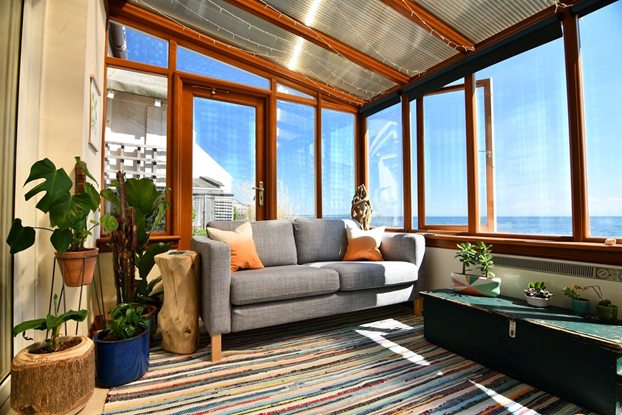
Whether you’re looking to boost your savings or boost your impact on the environment, you can make your home more environmentally friendly and energy efficient. Keep reading to find out how energy-efficient windows specifically can help you save a little green while being green.
When Should You Install Energy-Efficient Windows?
Quality windows should last about 20 years in your home. So if your home is older or you haven’t replaced your windows in nearly two decades, you’ll want to have a professional install new ones as soon as possible.
Additionally, if your windows are damaged, they can make your home less energy efficient. Instead of just replacing broken or old windows with similar panes, opt for an energy-efficient alternative to enhance your energy savings.
What Else Should You Consider?
You need to keep a few other details in mind when you have your traditional windows replaced with energy-efficient ones.
Have an Expert Do the Job
You should also have window professionals handle your window installation. Ask them to inspect each window and look at the weatherstripping to ensure everything is in good condition. This way, you ensure air won’t leak into or out of your home.
Know Which Window Glass Panels Work Best
You have three types of energy-efficient glass panels to choose from gas-filled, triple-glazed vinyl, and triple-glazed–wood framed.
Gas-filled windows typically consist of two glass panes that contain krypton, xenon, or argon gas between them. Some of these windows may have a third pane of glass in the middle with gas pumped on each side.
The gas helps seal the windows and prevent condensation from building up inside your window, and that feature also helps the windows keep the air in your home inside — and the outside air out of your house. As a result, your home becomes more energy efficient because your HVAC system doesn’t have to work as hard to cool and heat the interior during each season.
Triple-glazed vinyl windows are considered some of the best windows on the market because they use passive solar energy to regulate your home’s temperature. These windows have at least three insulated layers in them and are surrounded by a vinyl exterior.
Triple-glazed wood framed windows use the same insulating method as the triple-glazed vinyl windows but have a wood frame around the borders. The design of these windows allows homeowners to still benefit from the airtight technology of triple glazing and the timeless look of wood windows.
Decide Which Frame Material You Want
You may choose wood, vinyl, composite, metal, or fiberglass as the material for your window frames. Each has its pros and cons, and one of your contractors can help you decide which will work best with your home’s style and your goals for energy efficiency. However, some window contractors may only work with one or two material types, so ask them which materials they use so you can make the best decision.
Choose the Best Window Style
Some window styles are more energy efficient than others. For example, double-hung windows have two individual sashes that slide up and down within the frame. These windows are great for allowing air into your home, but they’re not the most energy efficient. Fixed windows, however, don’t open at all, which means they won’t let any air in or out of your house.
You can choose other window styles — including casement windows, hopper windows, and awning windows — that are more energy efficient and fit your needs best.
Place Your New Windows in the Right Spot
You wouldn’t think windows would need to be placed in a certain spot. But you can significantly improve your home’s energy efficiency if you have your new windows installed in strategic areas of your home.
If you have lots of east- or west-facing windows, replace those first. When the sun rises or sets, these windows allow lots of natural light into your home. They also allow your home to get hotter in the summer. By installing energy-efficient windows along the east and west sides of your home, you can better regulate your internal temperature and energy usage.
Your climate will also dictate where you should place your new windows. For example, a house in Arizona might need all windows replaced at once because the area sees the consistent sun and high temperatures. Homes in Utah and Idaho, however, experience a range of temperatures throughout the year and might not require all windows to be replaced in one go.
Whatever you choose, remember to consult with your window professional before having them install your new fixtures. They’ll know which windows to replace first so you can reap the most benefits.
Ready to make a difference in your home and the environment? Contact Valley Glass to learn more about installing energy-efficient windows and reducing your impact on Mother Nature. She’ll thank you for it — and so will your wallet!


Leave a Reply